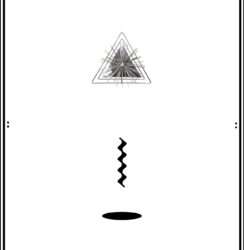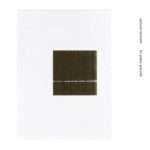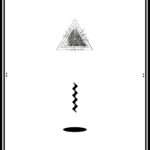SAMUEL REINHARD – FOR PIANO AND SHŌ
On Discogs, Swiss-born but New York-based composer Samuel Reinhard is described as ‘a composer of electroacoustic music’. I am not (yet) familiar with his earlier work, but I definitely would not call the two pieces on For Piano and Shō ‘electroacoustic’: they are performed with only two acoustic instruments. (Maybe that is why on the About page on his website, this part is skipped).
‘Guided by minimalist and aleatoric tenets, Reinhard’s work emphasizes repetition and extended duration’. This part is absolutely true, though, and I would add ‘unhurried’ (“To be slow and still”) to that: I don’t think I have heard music this slowed-down since Reinbert de Leeuw’s piano interpretations of the music of Satie.
The two (20-minute) compositions are based on slow, repeated piano motifs, at times accentuated by the sound of the shō – a fascinating Japanese reed instrument with 17 bamboo pipes, somewhat resembling an organ and with a very distinctive sound ‘said to imitate the call of a phoenix’. The combination of these two completely different instruments – the piano (performed by Paul Jacob Fossum) and the shō (played by Haruna Higashida) – works extremely well.
There is a small difference between the two compositions: the first one is a multitrack recording with three pianos ‘slowly encircling each other, each at their own pace’, and three shōs ‘providing harmonic “reflections” of the melodic motifs’. (I must confess however that I had not noticed there were more than the two instruments involved here).
In the second piece, ‘a piano moves through a trio of figures—an arpeggio, an improvisation, a chord—for the duration of the performance. Each iteration of this sequence is accompanied by a single shō, which freely selects and plays a note or chord, emerging from the piano’s first figure and disappearing into the third’.
The music exudes absolute tranquility because the players hold their notes ‘through touch or breath’ until the sound fully decays. Music, based on repetition, yet ever-changing… I played the album on repeat because I wanted it to last longer than these beautiful 40 minutes…
(If you want to read more about this album and the composer: Elsewheremusic (the label) has published a Q&A with Samuel Reinhard here).
NESTOR – BÓRDICE
There is an ongoing discussion about which tuning is preferred for music: 432 Hz or 440 Hz. Historically, 432 Hz was the standard for music, but in the 20th century, 440 Hz became more popular (and is currently the standard ‘ISO 16’ tuning. Each tuning has its own advocates: some believe that 432 Hz provides a deeper, more harmonious experience (and may even have a positive impact on relaxation and well-being), while others argue that 440 Hz sounds brighter and more energetic. There is no scientific evidence that one is better than the other, so – like most things regarding music – it comes down to a matter of taste.
Enter Nestor‘s Bórdice. Nestor is Noé Cuéllar, also one half of the duo Coppice. Bórdice is a (digital-only) double album presenting all (11) tracks in 432 Hz as well as in 440 Hz – so decide for yourself which tuning you prefer.
It’s not only the different tuning that is remarkable on this album: it’s also the sound. It may sound like very interesting synth patches – and perhaps they are: this music is created with “phantom” glass instruments: (glass) organs, glass harmonica, verrophone (also known as glass harp), and blown bottles. I’m not really sure what ‘phantom’ means, but I like to tell myself they are real instruments (but what about the different tuning then?). Real or ‘phantom’, the music has a beautiful ‘glassy’ sound – bright yet mysterious.
All tracks are composed by Cuéllar except Jasmine, which fans of Current 93 may recognize.
If you like to experience your music with accompanying visuals, the full album (both ‘cycles’: 122 minutes) is also available on YouTube.




